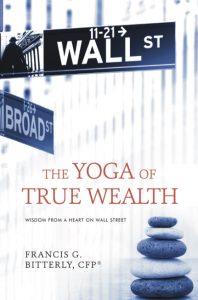“Are you looking for me?
I am in the next seat.
My shoulder is against yours.
You will not find me in the stupas,
not in Indian shrine rooms,
nor in synagogues,
nor in cathedrals:
not in masses,
nor kirtans,
not in legs winding around your own neck,
nor in eating nothing but vegetables.
When you really look for me,
you will see me instantly —
you will find me in the tiniest house of time.
Student, tell me, what is God?
He is the breath inside the breath.” – KABIR- 15th-century Indian mystic poet
This week I want to write about what I feel to be a very direct way to plant a spiritual pivot that will help anyone open the way to encounter True Faith.
First my caution, always be aware of the limitation of words for they are just pointers. Your own experience within holds the key. This requires some faith to rise past words and go beyond thought. This is the way to faith and freedom.
Within each of us rests the “I“ identity. For my experience, studying the great teachers work around this “I” within holds the key to everything spiritual.
This “I“ is my being and how I am aware that I am. It is so important that it bears repeating. This awareness of your origin of knowing you are,” The spiritual I of being itself, holds the key to true faith and finding the divine. As Kabir has said, it is the breath inside the breath.
By concentrating on our inner selves and setting attention and awareness on consciousness itself (Meditation), we are meeting our own souls. The great traditions springing from India have a name for this inner awareness of being. It is called the Atman.
Many scholars believe Jesus “The Christ” absolutely reflected a pure Avadhuta in his philosophy and faith but spoke in a completely different language for many various reasons.
We will not get into this today but remember all of this deep faith is beyond the separations caused by religions.
First, let’s take a look at what an “Avadhuta” is with an excerpt from: Jacki Parikh’s Interpretation of the “Avadhuta Gita.”
“Who or what is God? Would you be surprised to know that in spite of reference to thousands of ‘gods’ in Hinduism, the highest and final conception of “God” is not a figure with multiple heads and a thousand arms bearing weapons, it is not Brahma-Vishnu-Shiva or their avatars, it is not even a He or a She! God in the highest sense of the term is a formless, genderless, inanimate principle! God is, in fact, the Supreme Universal Principle, or the Ultimate Universal Reality. In other words, God is Brahman, also known as the Absolute, the One Universal Consciousness, Supreme Reality, Sat-Chit-Ananda (Existence,knowledge,bliss,absolute). Brahman is the all-pervasive, infinite, unchangeable, indestructible, eternal Reality, the single binding unity behind all the diversity that seems to exist in the universe.
Then who are you? The other major metaphysical concept in Hinduism is Atman, or the Self. Narrowly seen, Atman may be taken to mean the individual soul, but in Hindu Vedanta, Atman is the very foundation, the first principle, the essence of an individual, the true Self of an individual beyond identification with phenomena. Advaita (“not-two” in Sanskrit) refers to the recognition that the true Self, Atman, is the same as the highest Reality, or Brahman. “
“The highest feeling is the experience of unity with All That Is. This is the great return to Truth for which the soul yearns. This is the feeling of perfect love” – Neale Donald Walsch – “Conversations with God”
It seems very reasonable to me that this Absolute and Atman would easily line up with Jesus’s reference to the father and the son. It is our greatest goal in life to reach this realization
I love Jesus Christ and I also love the Avadhuta Gita’s way of pointing to the Truth that Jesus was teaching.
Notice in essence the Atman is the same as Sat Chit Ananda- (Existence,knowledge,bliss,absolute).. pure consciousness itself – the divine
The Atman is the Real Self- the Real I.
Tat Tvam Asi – that thou Art.
Jesus knew exactly what he was – The divine Atman-, the Christ
The reality is that he was teaching us that we too could transcend – this is of paramount importance, you don’t have to go through anyone else’s dogma’s to reach Truth.
One of the great sages of 20thcentury India that many have never heard of was a man by the name of Shri Atmananda. According to Nitya Tripta, Atmananda held emphatically that the basic error in man was his wrong identification with body, senses and mind. When this was replaced by the right identification with Atma, the real ‘I’-principle, everything would be found to be perfectly in order and no change or correction in any walk of life whatsoever would be called for.
Another note from Sri Atmananda on understanding this “I” of the divine:
‘He’ alone stands unqualified through all time, continuing without a break. So it is this pure ‘he’ or ‘I’ (or consciousness) which shines through and in between all thoughts, feelings, perceptions and states. During this interval (between mentations), one has no thought of the state in which one happens to be. So here, one is Peace itself; and that is the ‘I’, in its pure state. Suppose you see a beautiful picture, painted on white paper. On close examining of the picture, you will be able to discover some parts of it where the original colour of the paper appears, unaffected by the shades of the picture. This proves to you the existence of the paper behind the picture, as its background. On further examination, you will see that the picture is nothing but the paper. So also, if you succeed in discovering yourself between two mentations, you easily come to the conclusion that you are in the mentations as well.
When meditating try to stay aware of and in your ”I am” being
Realize your True I.
Sense the real I as opposed to the Ego I.
Bring the deep Truth of this Gita and Sri Atmanada into your awareness.
If you’re a Christian, it will bring you closer to Jesus.
Feel the living Christ within you… it is REAL.
Bless everything and everyone.
THE FINAL YOGA.
Always discriminate.
“When you can distinguish between the Atman and non- Atman, you have reached the culmination of Yoga. As this discrimination grows in the mind of a yogi, he reasons this: I am not this body, which is composed of earth, water, fire, air, and space; and yet clinging to this body, I desire happiness.
Pleasure and pain come and go in the body. Since I am not the body and since in my true nature there is no ebb and flow, I am always the same—serene, peaceful, unmoved by outer events.
Likewise, enjoyment and misery have their beginning and ending in the mind. Since I am not the mind and since my true nature has neither beginning nor end, I am always the same— serene, peaceful, unmoved by inner events. Let pleasure and pain, enjoyment and misery, remain in the body or the mind; it matters nothing to me, for I am the Atman— Existence Knowledge Bliss Absolute.” —Avadhuta Gita Of Dattatreya


